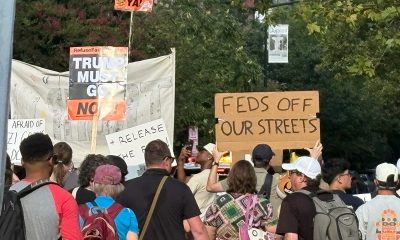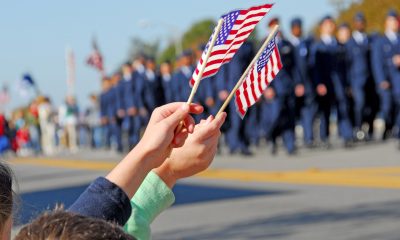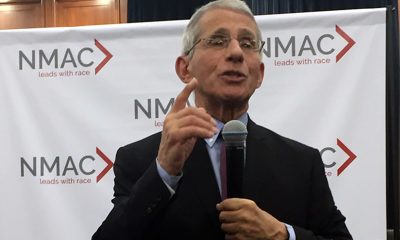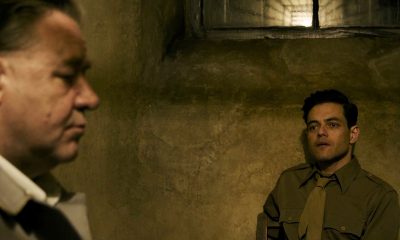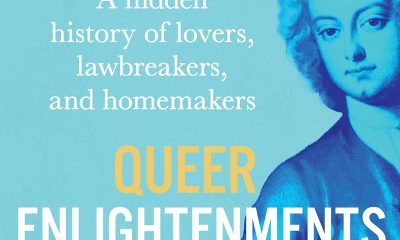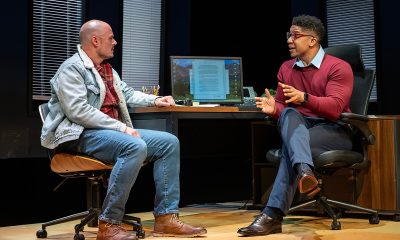Books
More books for your COVID downtime
From history to LGBTQ studies, something for all tastes
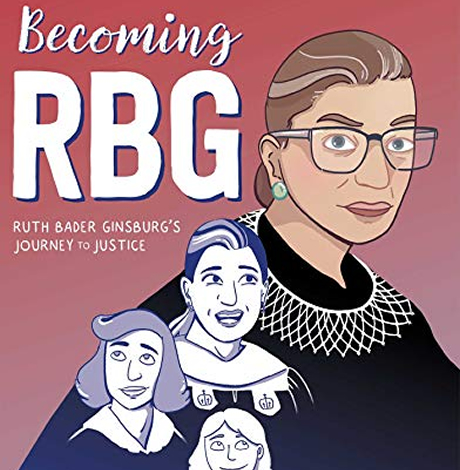
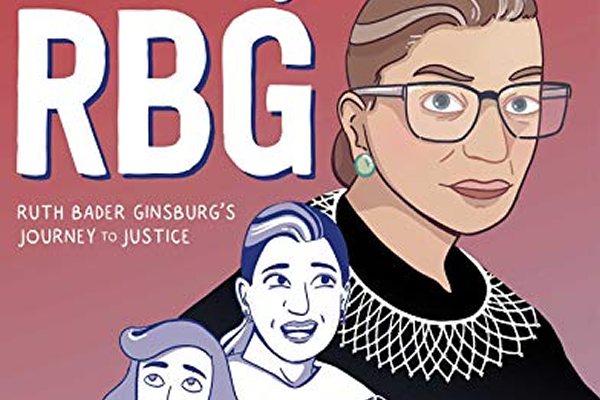
This is part three of a three-part series spotlighting some of the best books to read while passing time during the COVID-19 quarantine.
HISTORY
If you’re looking for something empowering while you’re stuck at home, try “Mighty Justice: My Life in Civil Rights” by Dovey Johnson Roundtree and Katie McCabe. During the Civil Rights Movement, Roundtree was an attorney who not only helped her clients but also took on a racist system in North Carolina and nationally. Another book to find is “Race Against Time” by Jerry Mitchell. As a reporter, Mitchell opened Civil-Rights-era crimes, and this is his story.
You might not find “The Rise and Fall of Charles Lindbergh” by Candace Fleming in the adult biography section of your library or bookstore. You may find it in the Young Adult section, but that doesn’t mean this book is just for teens. Adults will thrill to the story of Lindburgh, his feats and accomplishments, his life and tragedy, and the beliefs he held that tarnish his legacy today.
Civil War buffs will want “Not Even Past: The Stories We Keep Telling About the Civil War” by Cody Marrs close by. Here, Marrs takes a look at that which has been written and told for generations, and why those tales still matter. Also look for “Hymns of the Republic: The Story of the Final Year of the American Civil War” by S.C. Gwynne. The title is appealing, all on its own.
World War II buffs will thoroughly enjoy reading “Inge’s War” by Svenja O’Donnell. It’s the story of a story that O’Donnell learned as an adult, when she reached out to her grandmother and discovered family secrets, triumphs, and villainy.
Speed demons in need of a little zoom will want to find “Faster” by Neal Bascomb, a book about a race car driver who was the victim of racism; an automaker who was the victim of financial mayhem, and an heiress who dreamed of her youth. Add in a bit of history, Nazi Germany, and a fast-paced story and really, how can you resist?
If you love reading slice-of-life historical tales, then look for “The Jamestown Brides: The Story of England’s ‘Maids for Virginia’” by Jennifer Potter. It’s the true story of the women who left their homes in Great Britain in 1620 to join settlers in Jamestown, Virginia, the hardships they endured, and what it was like to live in America at the country’s very infancy.
LGBTQ STUDIES
OK, so you’re up for something unique now, and you can’t go wrong with “Uncomfortable Labels” by Laura Kate Dale. What makes it different is that Dale is a gay trans woman who is also autistic and this book is about her self-discovery and her life.
Here’s a book for parents, and for transgender readers: “What We Will Become” by Mimi Lemay, a story of a little girl who knew she was a boy, and his mother, an ultra-Orthodox Jew who loved her child enough to give up her old life.
Maybe when this is all over, a bit of poetry is what you’ll need, and “Daddy” by Michael Montlack will be what to look for at the end of this virus’ run. Some of the poems are musings, some are heartfelt, others read a bit like individual paragraphs, all are compelling. You’ll find “Daddy” available in later April.
CHILDREN’S BOOKS
Books are great antidotes to being cooped up for weeks, and “Johnny’s Pheasant” by Cheryl Minnema, illustrated by Julie Flett is a good one to have. It’s the story of an injured bird, a grandma’s love, and a boy with dreams. Another goodie for little readers is “Bedtime for Sweet Creatures” by Nikki Grimes, pictures by Elizabeth Zunon. It’s a tale of goodnight, and it’s perfect for little sleepyheads.
For the middle-grader who worries about the earth, “Bugs in Danger” by Mark Kurlansky, illustrated by Jia Liu is a great find. This book looks at climate change, environmental issues, why the bug population has declined over the past few years, and what we can do to stop it. Another book to find is “Wildlife Adventure” by Coyote Peterson. It’s a book with facts and activities and it might make the time go a little faster.
Little biography lovers will be happy to sit home with Work It, Girl bios, like “Become a Leader Like Michelle Obama” or “Blast Off Into Space Like Mae Jemison,” both by Caroline Moss, illustrated by Sinem Erkas. These books offer a great story, plus learning, plus an update on the lives featured. For the 9-to-13-year-old, a bio couldn’t be better.
The child who loves to people-watch will enjoy reading “Hmong in Wisconsin” by Mai Zong Vue, even when there aren’t a lot of people around. This is a story of immigration, bravery, war, and learning in two different cultures.
The young adult with a growing interest in politics will enjoy “Becoming RBG: Ruth Bader Ginsburg’s Journey to Justice” by Debbie Levy, illustrated by Whitney Gardner. It’s a graphic-novel-style biography on Justice Ginsburg, from her earliest years to her current battles.
A lottery ticket and all that comes with sudden wealth are at the root of “Jackpot” by Nic Stone. When Rico Danger finds a winning ticket and shares with “Zan” Macklin, it seems like every problem either friend has ever had might be over – but money changes things, especially relationships. Another book to look for: the coming-of-age “If Anyone Asks, Say I Died from the Heartbreaking Blues” by Philip Cioffari. It’s the story of an 18-year-old, first love, and doing what’s right.
If the quarantine lasts a while, there’ll be time to read “Kent State: Four Dead in Ohio” by Derf Backderf. It’s a graphic-novel sort of history book about what happened on that horrible day in 1970, but be patient: this book releases on April 7, so look for it.
Books
New book highlights long history of LGBTQ oppression
‘Queer Enlightenments’ a reminder that inequality is nothing new
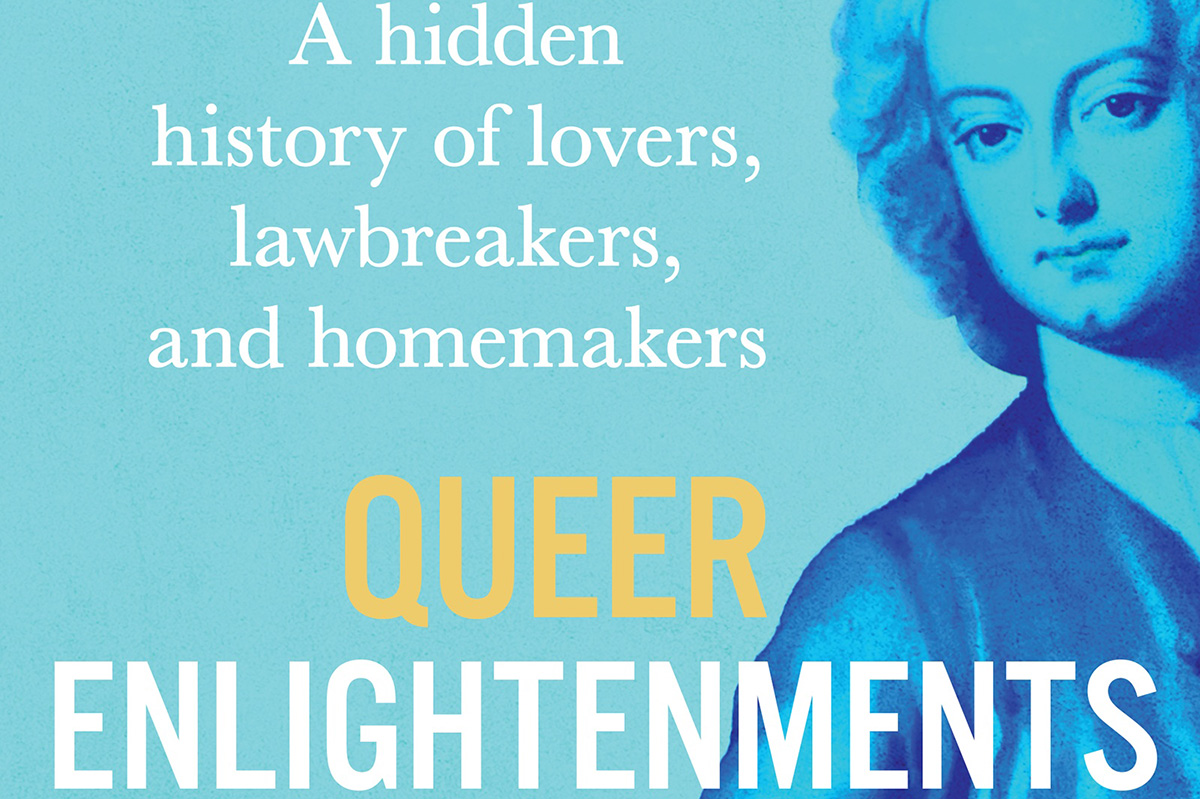
‘Queer Enlightenments: A Hidden History of Lovers, Lawbreakers, and Homemakers’
By Anthony Delaney
c.2025, Atlantic Monthly Press
$30/352 pages
It had to start somewhere.
The discrimination, the persecution, the inequality, it had a launching point. Can you put your finger on that date? Was it DADT, the 1950s scare, the Kinsey report? Certainly not Stonewall, or the Marriage Act, so where did it come from? In “Queer Enlightenments: A Hidden History of Lovers, Lawbreakers, and Homemakers” by Anthony Delaney, the story of queer oppression goes back so much farther.

The first recorded instance of the word “homosexual” arrived loudly in the spring of 1868: Hungarian journalist Károly Mária Kerthbeny wrote a letter to German activist Karl Heinrich Ulrichs referring to “same-sex-attracted men” with that new term. Many people believe that this was the “invention” of homosexuality, but Delaney begs to differ.
“Queer histories run much deeper than this…” he says.
Take, for instance, the delightfully named Mrs. Clap, who ran a “House” in London in which men often met other men for “marriage.” On a February night in 1726, Mrs. Clap’s House was raided and 40 men were taken to jail, where they were put in filthy, dank confines until the courts could get to them. One of the men was ultimately hanged for the crime of sodomy. Mrs. Clap was pilloried, and then disappeared from history.
William Pulteney had a duel with John, Lord Hervey, over insults flung at the latter man. The truth: Hervey was, in fact, openly a “sodomite.” He and his companion, Ste Fox had even set up a home together.
Adopting your lover was common in 18th century London, in order to make him a legal heir. In about 1769, rumors spread that the lovely female spy, the Chevalier d’Éon, was actually Charles d’Éon de Beaumont, a man who had been dressing in feminine attire for much longer than his espionage career. Anne Lister’s masculine demeanor often left her an “outcast.” And as George Wilson brought his bride to North American in 1821, he confessed to loving men, thus becoming North America’s first official “female husband.”
Sometimes, history can be quite dry. So can author Anthony Delaney’s wit. Together, though, they work well inside “Queer Enlightenments.”
Undoubtedly, you well know that inequality and persecution aren’t new things – which Delaney underscores here – and queer ancestors faced them head-on, just as people do today. The twist, in this often-chilling narrative, is that punishments levied on 18th- and 19th-century queer folk was harsher and Delaney doesn’t soften those accounts for readers. Read this book, and you’re platform-side at a hanging, in jail with an ally, at a duel with a complicated basis, embedded in a King’s court, and on a ship with a man whose new wife generously ignored his secret. Most of these tales are set in Great Britain and Europe, but North America features some, and Delaney wraps up thing nicely for today’s relevance.
While there’s some amusing side-eyeing in this book, “Queer Enlightenments” is a bit on the heavy side, so give yourself time with it. Pick it up, though, and you’ll love it til the end.
The Blade may receive commissions from qualifying purchases made via this post.
Books
A history of lesbian workarounds to build family
Fighting for the right to have and raise kids
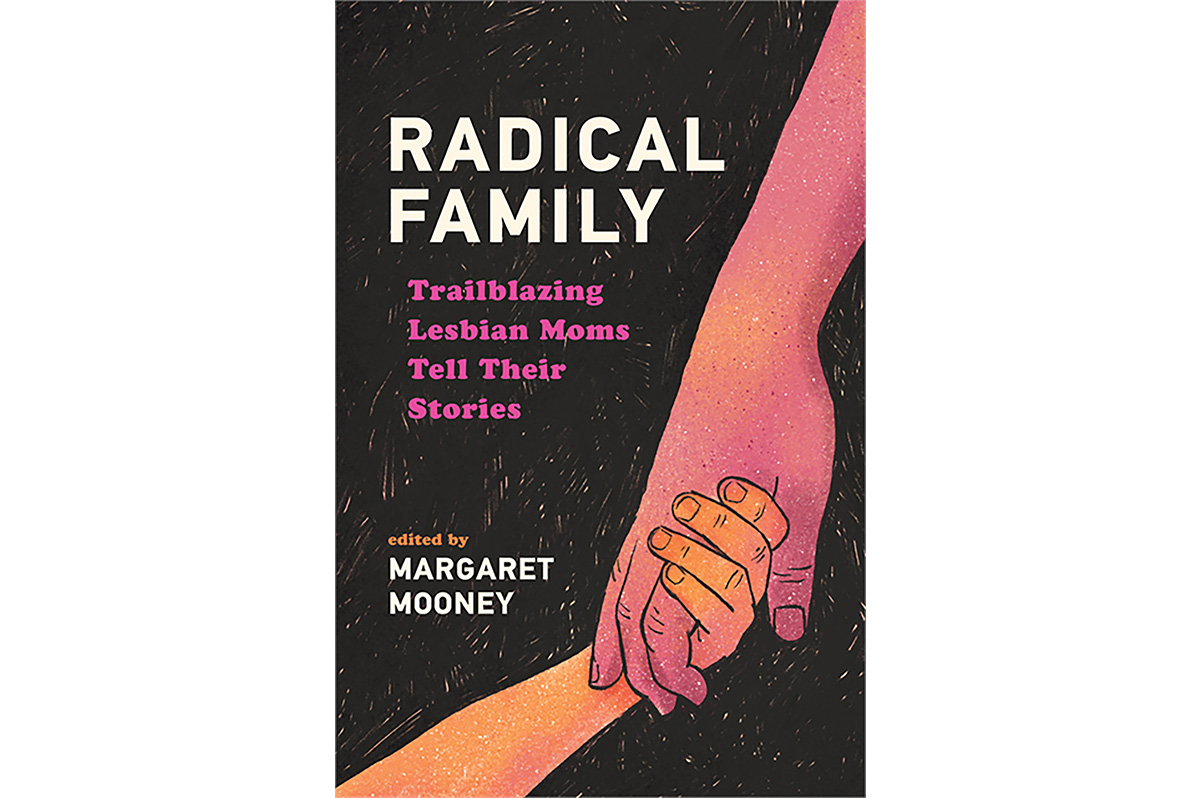
‘Radical Family: Trailblazing Lesbian Moms Tell Their Stories’
Edited by Margaret Mooney
c.2025, Wisconsin Historical Society Press
$20/150 pages
You don’t have a white picket fence with an adorable gate.
The other parts of the American Dream – the house in the suburbs, a minivan, and a big backyard – may also be beyond your reach. You’ve never wanted the joyous husband-wife union, but the two-point-five kids? Yeah, maybe that’s possible. As in the new book “Radical Family,” edited by Margaret Mooney, it’s surely more so than it was in the past.

Once upon a time, if a lesbian wanted to raise a family, she had two basic options: pregnancy or adoption. That is, says Mooney, if she was willing to buck a hetero-centric society that said the former was “selfish, unnatural and radical” and the latter was often just simply not possible or even legal.
Undaunted, and very much wanting kids, many lesbians ignored the rules. They built “chains” of women who handed off sperm from donor to doctor to potential mother. They demanded that fertility clinics allow single women as customers. They wrote pamphlets and publications aimed to help others become pregnant by themselves or with partners. They carefully sought lesbian-friendly obstetricians and nurses.
Over time, lesbians who wanted kids were “emboldened by the feminist movement and the gay and lesbian rights movement” and did what they had to do, omitted facts when needed, traveled abroad when they could, and found workarounds to build a family.
This book tells nine stories of everyday lesbians who succeeded.
Denise Matyka and Margaret McMurray went to Russia to adopt. Martha Dixon Popp and Alix Olson raised their family, in part and for awhile in conjunction with Popp’s husband. Gail Hirn learned from an agriculture publication how to inseminate herself. MC Reisdorf literally stood on her head to get pregnant. Mooney says that, like most lesbian parents then, she became a mother “without any safety nets…”
Such “struggles likely will feel familiar as you read about [the] desire to become parents…” says Mooney. “In short, these families are ordinary and extraordinary all at once.”
In her introduction, editor Margaret Mooney points out that the stories in this book generally take place in the latter part of the last century, but that their relevance is in the struggles that could happen tomorrow. There’s urgency in those words, absolutely, and they’re tinged with fear, but don’t let them keep you from “Radical Family.”
What you’ll see inside these nine tales is mostly happy, mostly triumphant – and mostly Wisconsin-centric, though the variety in dream-fulfillment is wide enough that the book is appropriate anywhere. The determination leaps out of the pages here, and the storytellers don’t hide their struggles, not with former partners, bureaucracy, or with roadblocks. Reading this book is like attending a conference and hearing attendees tell their tales. Bonus: photos and advice for any lesbian thinking of parenthood, single or partnered.
If you’re in search of positive stories from lesbian mothers and the wall-busting they did, or if you’ve lived the same tales, this slim book is a joy to read. For you, “Radical Family” may open some gates.
The Blade may receive commissions from qualifying purchases made via this post.
Books
Florida’s war on Black, queer lives hidden no more
New book ‘American Scare’ exposes truth of decades of erasure, attacks
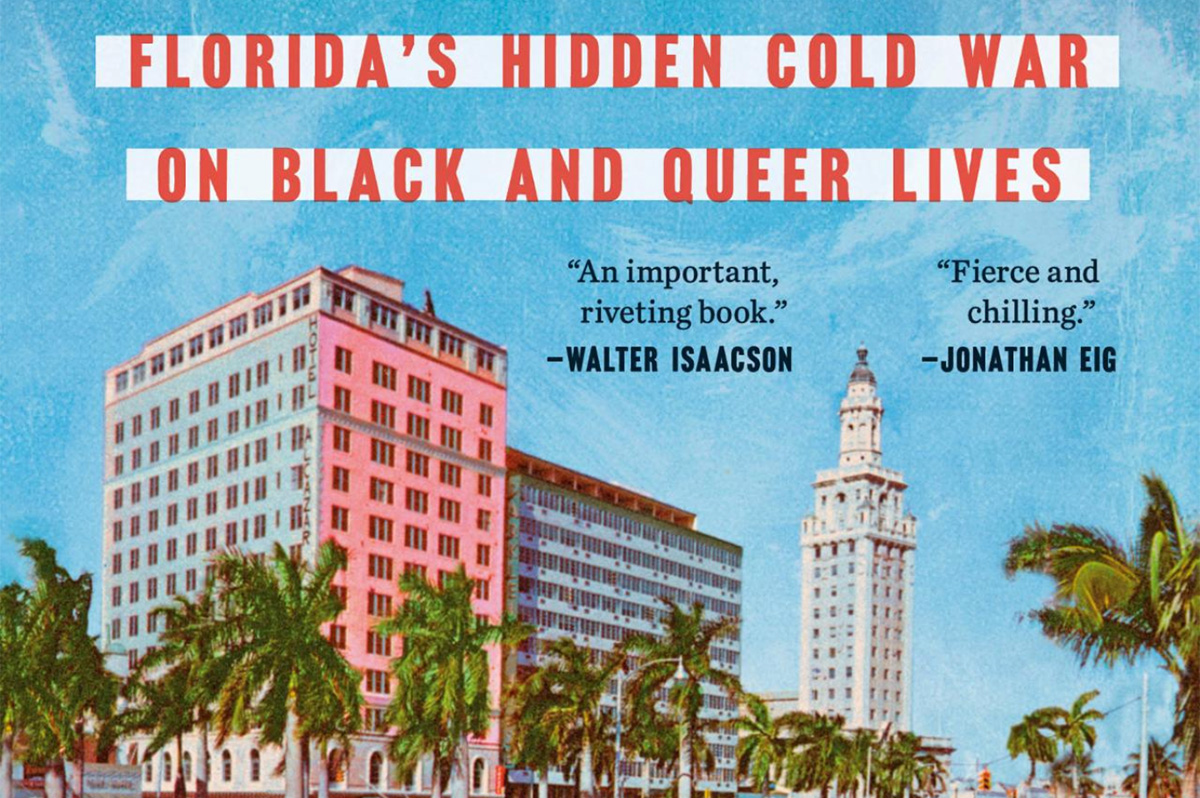
‘American Scare: Florida’s Hidden Cold War on Black and Queer Lives’
By Robert W. Fieseler
“What’s with Florida?,” Bobby Fieseler, disgusted, asked after completing his initial research into the vicious investigation of suspected homosexual teachers by the Florida Legislative Investigation Committee (FLIC) in the 1950s. How did the official animus toward all things queer happen in Florida, Fieseler pitched his publisher. We can be grateful Dutton gave him the green light for “American Scare, Florida’s Hidden Cold War on Black and Queer Lives.”

Fieseler’s book is a masterpiece of archive activism that begins in a rental van escaping Florida with some 20 boxes of historical documents meant to be seen by no one. The cartons contained a secret second copy of materials that had been held back from the jaws of the Florida State Archives in Tallahassee. Soon, more folders would surface with unredacted materials. “There are friends of Dorothy in any system,” he explains his archival detective work with a wink.
What’s with Florida? In the 1950s, it was all about legislators exposing politically helpless homosexuals to justify the committee’s investigations and budgets. The FLIC documents reveal the names of the accused “perverts,” the cops who raided the restrooms, the terrified queer informants and the professional interview techniques that would extract confessions from the victims. On another level, this was about old-school Southern racists determined to stop integration at all costs with intention to weave lies about Communist infiltration of the NAACP. Finally, Fieseler encountered first-hand an official determination to erase and lock-up this history. The statewide obsession with erasing history continues to this day. The Florida Department of Transportation this year painted over the community rainbow crosswalk memorial to the Pulse nightclub massacre victims in Orlando.
“American Scare” is such a fully documented investigation of what unfolded, it will be impossible to paint over the magnitude of this assault. The book bears witness in gory detail to the ruination of private people that exceeds in pure perniciousness the more famous “Lavender Scare.” Although the “Lavender Scare” purged many more individuals, it was about the U.S. Department of State firing public officials slimed as “pinstripe twerps.” The Florida investigations were a statewide purge using a dark politics of exposure of schoolteachers leading private lives. Fieseler quotes Remus Strickland, the head homo-hunter and executive director of the Southern Association of Intelligence Agents formed in response to the Supreme Court’s Brown v. Board of Education desegregation decision (1954), “If the Committee’s first pursuit (race and Communism) was a mandate, its second pursuit (homosexuals) was an opportunity.” Remus (that’s really this Southerner’s name) explained years later without remorse, “We first looked at the University of Florida for Communists….then we came back and did the homosexual purge.” Fieseler’s archival research reveals how far-right politicians and investigators like Strickland characterized Communists, African Americans (through the NAACP) and homosexuals as aligned “treasonously in a subversive societal infestation.”
The whole show was the creation of a wily, populist politician — a Florida “Pork Chopper” — Charley Johns, president of the Florida Senate. “Pork Choppers,” the rural, white Northern Florida wing of the old Democratic Party, controlled the state legislature from the 1930s to the 1960s. They were strongly opposed to integration, Communists, homosexuals, reapportionment and government reform. Johns owned the Charley E. Johns Insurance Agency, which insured state agencies. Fieseler’s history brings these North Florida politicians into grotesque focus. Their “power had lynched history,” he writes about his passion to excavate how they sealed and redacted the records so they would never face responsibility for their actions.
“American Scare” reveals how these Pork Choppers were willing to crush homosexuals as an instrument to maintain power. Their victims were isolated gay and lesbian teachers who could only plead for mercy, vanish or inform on one another. They were entrapped by the system itself. Fieseler tells the story of how Remus Strickland pulled Miss Poston, a physical education teacher out of her classroom surprising her with a tape recorder and a request to give a misdirecting statement about the prevention of child molestation. Suddenly Remus changed the subject: “Miss Poston, in your acts with Miss Bradshaw whom you referred to on this record, would she play the part of the aggressor…..She was known as the butch is that true?….Was there any occasion of any oral copulation?” He closed in for the kill, “Could there have been more than one time”? Miss Poston caved, “Possibly but if so only one more time.” The reel-to-reel tape is turning.
Concert pianist and music teacher William James Neal received the same taped grilling. Remus begins the interview, “You’re an educated Nigra,” confronting Neal with testimony he was a homosexual “nigra.” Years later, Neal remembered, “He told me I would never teach within the continental limits of the United States. He said he had proof I was a homosexual.” An African-American concert pianist, Neal had extensively toured the U.S. playing with major orchestras and hosting his own radio program in Florida. Neal had the self-respect and courage to take his illegal termination to the Florida Supreme Court. In 1962, the court ruled in his favor (Neal v. Bryant) handing Remus Strickland a devastating defeat, writing “The statements accused teachers allegedly made were obviously extracted under a threat of publicity.” Vindicated, William Neal nonetheless left Florida never to return.
There have been resolutions for an acknowledgment and apology. None have advanced through the Republican-controlled legislature occupied with a slew of “Don’t Say Gay” bills. “American Scare’ is larger than a small-bore history of investigations. It is the story of a Great Florida Teacher’s Purge launched to stop integration. Fieseler is done with redactions. He names names. If there is anything redemptive in this Southern hot mess, it is this: Bobby Fieseler, a queer historian, rescued the boxes and delivers readers their contents with history’s gale force.
The Blade may receive commissions from qualifying purchases made via this post.
-

 Movies5 days ago
Movies5 days agoIn solid ‘Nuremberg,’ the Nazis are still the bad guys
-

 Books5 days ago
Books5 days agoNew book highlights long history of LGBTQ oppression
-

 Theater3 days ago
Theater3 days agoGay, straight men bond over finances, single fatherhood in Mosaic show
-

 Chile3 days ago
Chile3 days agoChilean presidential election outcome to determine future of LGBTQ rights in country

